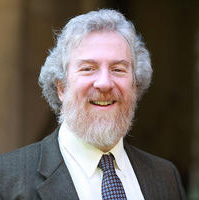The Anomaly of the Night: Fear, Power, Divine Presence (Shekhinah), Part 2

To the human heart and soul, night and morning are profoundly different, even though an astronomer would see them as equivalent observed consequences of the orbit of the earth around the sun. The first blessing of the evening service (Siddur Sim Shalom for Shabbat, 28) praises God for establishing the natural cycles: “You roll away light as darkness sets in, and darkness as the light dawns.” The morning service offers a tight structure of two blessings before, and one after, the Shema’ on the themes of Creation, Revelation, and Redemption (to be explored here in a future essay). Although the texts are a little different in the morning and the evening, the themes are identical.
In the morning service, the blessing on Redemption is followed immediately by the ‘Amidah, consistent with a curious edict of the Sages: “Who is praiseworthy? One who connects (the blessing of) Redemption and the ‘Amidah.” The evening service inserts a new blessing, Hashkiveinu (Siddur Sim Shalom for Shabbat, 33), that is born out of the human experience of the onset of the night. The halakhic commentaries note the intrusion into the Redemption-‘Amidah nexus, and offer a variety of explanations, some casuistic in the extreme.
Rabbi Reuven Hammer, notes in his masterful Or Hadash commentary to Siddur Sim Shalom (33) that “since night is a time that causes concern and even fear . . . it was appropriate to conclude the [evening] recitation of the Shema with a prayer for protection.” For adults and children alike, there are two concerns as we approach sleep: first, that our sleep be peaceful, untroubled by nightmares; and second, that we do indeed live through the night to enter a new day of life. The opening phrase of the text reflects these two concerns:“Hashkiveinu Adonai Eloheinu leshalom” (Let us lie down Adonai our God to [a night of] Shalom/Peace . . . “veha’amideinu malkeinu lechayim” (and let us rise again our Sovereign Lechaim / to life).
The text then turns to ask divine protection in two ways: first, from dangers originating in the natural world, or from other humans (“shield us from enemies, pestilence, the sword, starvation and sorrow”); second, from a different source of dread that is identified as the text continues (“haseir satan mi-lefaneinu ume’ahareinu”; Turn Satan away from us—in front and behind).
Recall that in the book of Job, Satan is identified as a member of God’s “court,” and—although the entity “Satan” has evolved greatly through later Jewish (and Christian) sources—in the rabbinic mind, Satan is a source of enticement or seduction from the pathways of honesty. Our translations omit explicit reference to Satan, but the original Hebrew remains, reminding us that the nighttime and our fears about it are not always rational, and that our liturgy engages with all our humanity, rational and irrational.
The text concludes asking God’s protection “when we go out and when we come in, for life and for peace.” May that protection, tangible and intangible, be with us in all times of darkness, when we face the demons of human aggression or, each of us, our own inner demons.
Listen to the following:
A cantorial setting presented by Hazzan Azi Schwartz at Park Avenue Synagogue
A Middle Eastern setting by Hazzan Ben Zion Netanel (z”l)
A contemporary setting by Craig Taubman
As always, I am interested in hearing comments and reflections on these thoughts about prayer and liturgy. You may reach me at sabarth@jtsa.edu.



